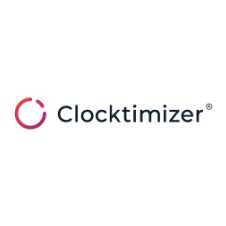Clocktimizer: Pricing, profitability and data: the missing link
For the past few blogs, we have been highlighting the importance of data in law firms. Not only how it is collected and stored, but why. We have shown the importance of evaluating the quality and accuracy of your sources. We have also looked at how good data can keep budgets on track in a huge variety of ways. Today, we are looking at one of the final pieces in the puzzle for many law firm executives. The relationship between data, pricing and firm-wide profitability. We look at why firms should prioritise pricing (not productivity) as the key metric to ensure the best returns. We also take advice from industry leaders on how to integrate and manage good pricing strategies.
Pricing, not productivity
While firms are slowly moving away from the billable hour, for many this frame of reference has not entirely left their notion of ‘value’. As such, many firms still reward and encourage the number of hours billed, or a number of new clients brought on board as indicators of success. The logic goes, the more hours billed, the more profitable the firm is. However, as any good data scientist will tell you, this is a correlation, not causation.
Focus[ing] on the profitability of clients and the products the firm offers to its clients will lead to strategic insights……. Understanding which revenue dollars drive firm profits and why will allow the firm to concentrate its efforts and direct its resources where the return on those resources can be maximized.
Thomas W Van Der Moere, Neal Gerber
Key to ensuring firm-wide profitability, and driving positive change, is in understanding how and why your business is profitable in the first place. And for that you need a pricing team. The most recent Altman Weil survey reported that (incredibly!) only 31% of firms have created a formal pricing role within their business. However, having been created, only 4.6% reported that this role had not “resulted in a significant improvement in firm performance”. Strong praise indeed.
Structural change
So given that productivity and profitability aren’t synonymous, why do so many firms still rely on this inaccurate metric? Well, as we touched on earlier, pricing and client value teams still aren’t ubiquitous in firms. However, without a team designed to understand and price things in a way that makes sense for the firm (and the client), profitability isn’t assured. The challenge, often, is in changing fundamentally the way a firm works. To guide this process, here are some tips from leading Pricing Managers to introducing this new role to your firm.
Get people excited about what pricing means. Too many in a firm still don’t understand how pricing improves profitability, or even client relationships.
We visit different offices. We talk about how pricing can help increase our win rate. We have a monthly newsletter with examples of clients and how we’ve helped specific partners. That has generated a lot of incoming interest. We often hear, ‘Oh, I didn’t know you had done that. Tell me more.
Jim Foley, Pricing and Legal Project Management Director at Hunton Andrews Kurth
Create pricing champions. Not everyone is going to be on your side. By finding those in the firm who value and understand pricing, and having them sing your praises, you increase the credibility of pricing throughout the firm.
At inception, start by working with the partners that are more willing to work with you, and they’ll share their success stories with their colleagues, which will start a positive snowball effect
Eddie Raychaudhuri, Chief LPM & Pricing Officer, Berger Singerman
Ensure your pricing team has the right mindset. Sales is going to be an incredibly important part of the pricing team’s work. They will have to sell the firm’s value to clients to increase win rates and client retention. They will also have to sell pricing internally to drive demand. The inability to do this will cause your pricing efforts to be ineffectual.
Offer clients options. To ensure the external success of a pricing team, it is good to provide your clients with pricing ‘options’.
Offer at least three options to your clients if you can (with different benefits and different prices). Clients love the power of choice and when you provide options your clients will consider more how they are going to work with you rather than whether they will work with you”
John Chisholm
Data and fee quotes
A clear and essential part of pricing (and its effect on profitability) is the fee quote. Fee quotes can make or break a firm’s bottom line. Too often they are inaccurate, or based on assumptions and feelings rather than data. In turn, this leads to write offs and unhappy clients who may choose to work with a more accurate firm in future.
To build accurate fee quotes, you must have good data. Tools like Clocktimizer help you build these fee quotes from historical matters. By selecting a number of ‘example’ matters, Clocktimizer can then pull up all other matters with a similar activity and seniority pattern. You can then select which activities are likely to fall into this new matter, and the platform will provide an average cost for each activity based on the historical data. Importantly, this platform is constantly learning from each new matter. As such, fee quotes become dynamic and can become more accurate (and even optimised) as the firm continues to use the platform.
The second key point for pricing managers to take into account is the notion of value. A good fee quote is about pricing for the value of the work itself. As such, pricing managers need to also have “value based data”. This includes how valuable the work is to the client, how often it is likely to be repeated (economies of scale), how other firms price their work, how investments in technology can reduce overheads. Data like this can be fed, in combination with fee quote data, to adjust the quote in line with market forces. As such, the fee quote becomes even more sophisticated, increasing overall profitability. To make things easier, try combining a number of APIs (like Clocktimizer’s) to put all of this information in one place.
Pricing and firm-wide profitability
Finally, pricing teams can also affect profitability from a top-down perspective. Through detailed analysis.
I think it’s absolutely crucial that the pricing team have access to billing data. Just unfettered access that we can analyze so that we can see historical trends in terms of staffing mix and profitability. Because that is essential for building our economic models or our forward-looking models
Hushmand Jonathan Cott, Chief Strategic Pricing Officer at Covington & Burling LLP
By analysing the relationship between all of the moving parts of a firm, pricing teams can identify strategies and efficiencies to improve overall profitability. This could be a new piece of technology which reduces manual work. Or it could be in understanding that teams with a good gender balance are better at client retention. Whatever the reason, analysis and then testing of those ideas, creates robust profitability strategies. Again, tools like Clocktimizer can help in the identification of efficiencies, and testing improvements. Finding high cost, repetitive work in a matter is easy. Then pricing teams can work with other departments to identify ways to cut costs.
Finally, for Pricing Managers looking for more detailed advice on creating a firm-wide strategy, Thomas W Van Der Moere, CFO of Neal Gerber, has created a fascinating in-depth client and product profitability analysis here. By combining tools and this advice, firms can ensure that the data they collect directly leads to strong pricing choices and accordingly increased profitability in the future.



